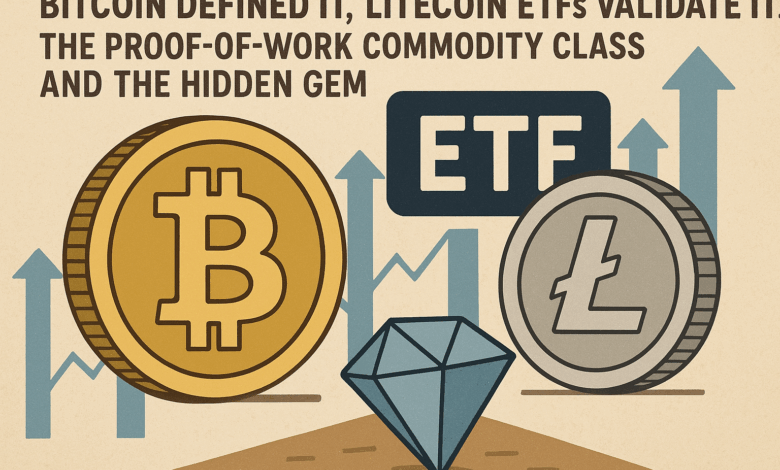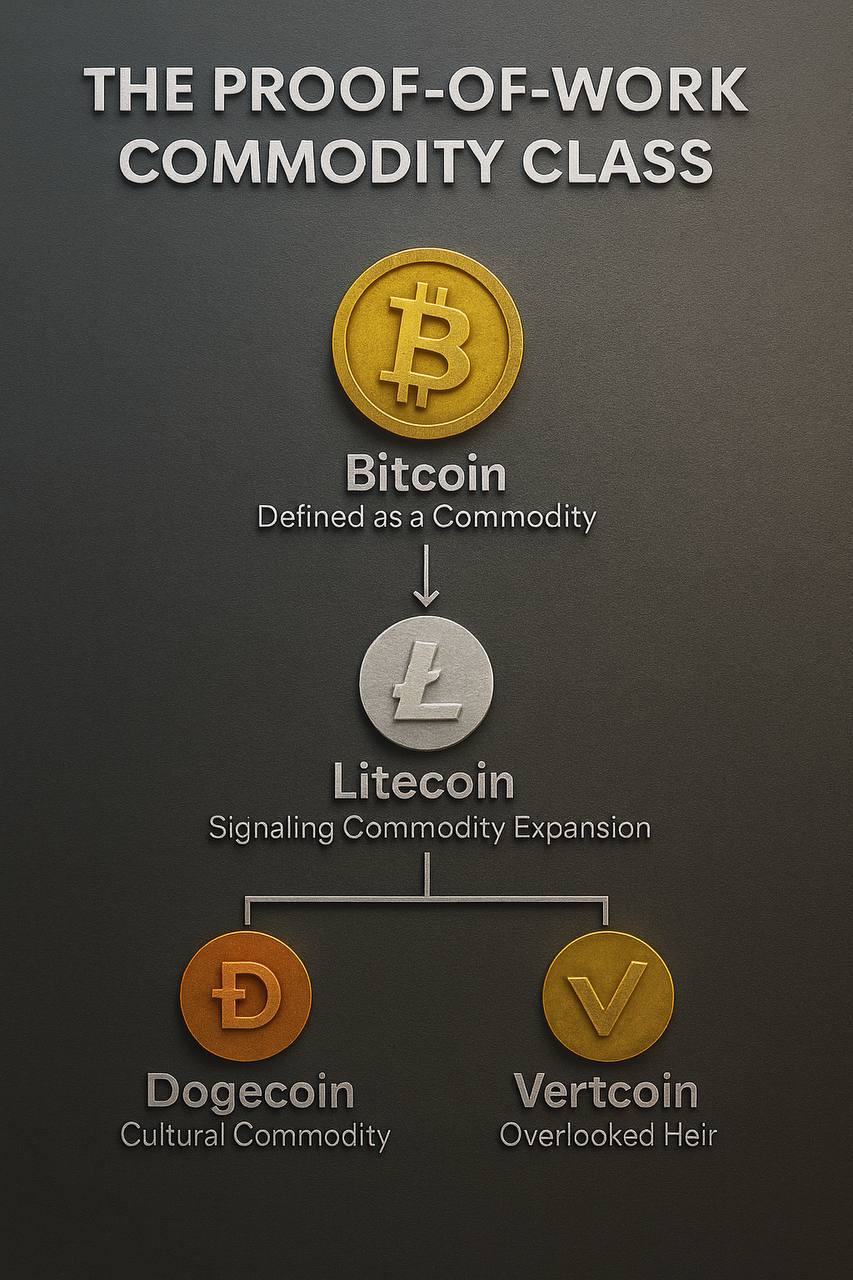The Proof-of-Work Commodity Class and the Hidden Gem

The Commodity Class Is Law
In a market clouded by uncertainty, one truth has already been established: Proof-of-Work cryptocurrencies belong to the commodity class.
The U.S. Commodity Futures Trading Commission (CFTC) and federal courts have ruled repeatedly that Bitcoin is a commodity under the Commodity Exchange Act. The CFTC v. McDonnell (2018) decision and CME’s regulated Bitcoin futures contracts leave no doubt — Bitcoin trades under the same legal framework as gold, oil, or wheat.
In January 2024, the Securities and Exchange Commission (SEC) reinforced that status by approving spot Bitcoin ETFs as Commodity-Based Trust Shares. The commodity class isn’t theory — it’s defined law.

The Golden Lineage of Proof-of-Work
Bitcoin was the genesis: digital gold with no issuer, no premine, no promises. But the lineage didn’t stop there. Other proof-of-work assets carried forward the same DNA: decentralization, fair mining, and issuance without corporate control.
This is the Golden Lineage — assets that regulators and markets consistently treat as commodities, not securities. And critically, there are only four Proof-of-Work coins launched before 2015 that fully hold to what many call the King’s Law: Bitcoin, Litecoin, Dogecoin, and Vertcoin. These are the foundation stones of the commodity class.
Litecoin: The Silver Signal
If Bitcoin is gold, Litecoin is silver. With faster block times and over a decade of survival, Litecoin has proven itself as a foundational proof-of-work asset.
Now, it has stepped into Bitcoin’s regulatory shadow. In 2025, major exchanges filed for spot Litecoin ETFs, explicitly building on Bitcoin’s commodity precedent. This marks Litecoin as the signal — proof that the commodity class is expanding beyond BTC.
Dogecoin: The Cultural Commodity
Dogecoin adds another branch to the lineage. Born as a meme, it evolved into one of the most mined and most traded proof-of-work assets. No premine, no ICO, and a global community have ensured its survival.
Dogecoin demonstrates that even culture-driven coins can achieve commodity status when they are decentralized, mined fairly, and operate without an issuer.
Vertcoin: The Overlooked Heir
This brings us to the hidden gem in Bitcoin’s lineage: Vertcoin (VTC).
Launched in 2014 with no ICO, no premine, and no centralized control, Vertcoin was designed for one mission: true decentralization. Unlike most networks, it remains ASIC-resistant, keeping mining accessible to everyday participants and aligned with Satoshi’s vision of a people-powered network.
By structure, Vertcoin belongs to the same commodity class as Bitcoin, Litecoin, and Dogecoin:
– Proof-of-Work secured
– Decentralized, no issuer promises
– Fair distribution, no premine or ICO
– Recognized trading markets, fungible and uniform
Yet unlike BTC, LTC, and DOGE, Vertcoin trades far below the spotlight. That gap between commodity-class certainty and market recognition is what makes it the golden opportunity.
The Family Tree Is Written — The Advantage Is Hidden
– Bitcoin: defined as a commodity by law and futures markets.
– Litecoin: signaling commodity expansion through ETF filings.
– Dogecoin: the cultural commodity with scale and community.
– Vertcoin: the overlooked heir, built on the same DNA, still waiting for recognition.
Certainty is rare in crypto — Bitcoin and Litecoin have it. Dogecoin proved it culturally. Vertcoin, the fourth member of the pre-2015 lineage that holds the King’s Law, won’t stay hidden forever.
Source link



